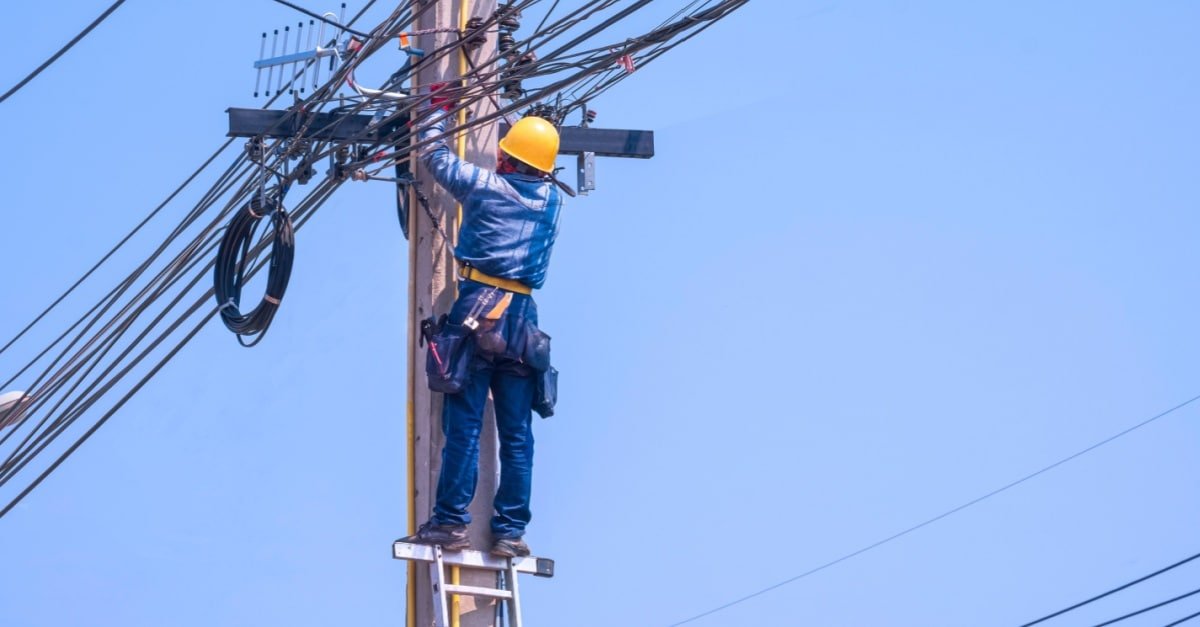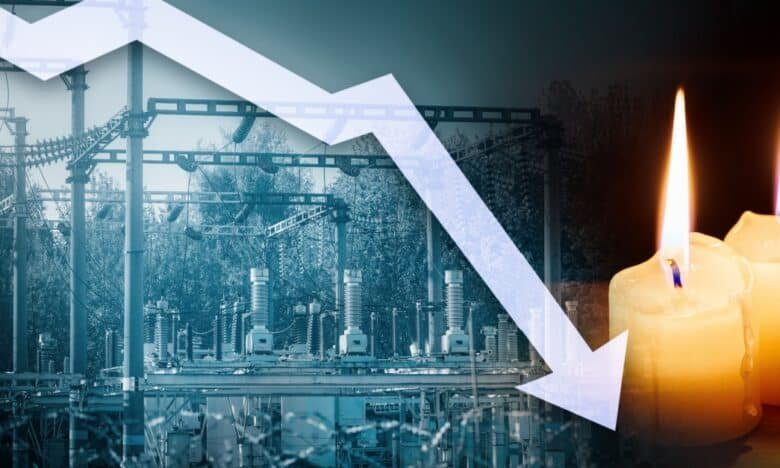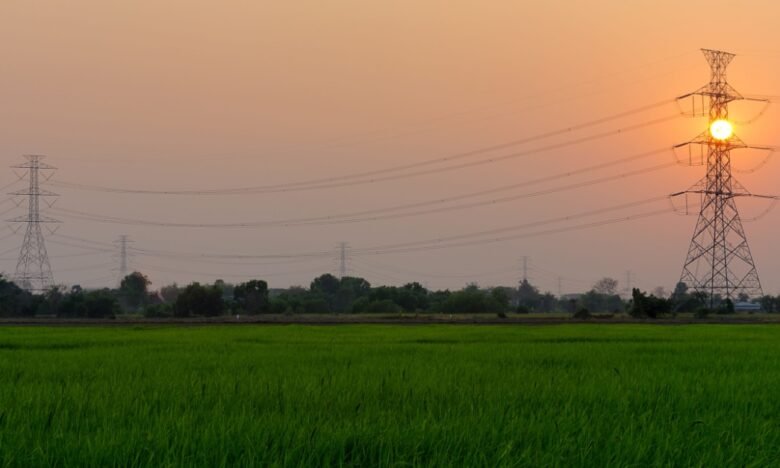
Are Electric Cooperatives Still Relevant Today?
- April 21, 2025
In the 1960s, electric cooperatives (ECs) helped bring power to rural areas that had not yet been reached by private companies. Their impact was significant, but the energy sector has changed. Modern power distribution demands technology, capital, and scale—challenges that many ECs are now struggling to meet.
“Our system of electric cooperatives was designed for an earlier age, when power demand was just a trickle compared to the deluge our modern economy now needs,” wrote political scientist and columnist Alex Magno in his opinion piece. “They are inadequate by design and unprepared to support an economy with a growing manufacturing base.”
Magno added that regions served by small ECs often miss out on major investments. When basic power needs go unmet, industrial growth and tourism take a back seat. Without faster upgrades, these areas risk falling further behind the broader economy.
(Also read: Study Reveals Solar and Wind Energy’s High Costs in the PH)
Where ECs fall short
Recent developments surrounding electric cooperatives have drawn increasing attention, highlighting the urgent need for rigorous evaluation.
1. Poor service
Frequent, unplanned interruptions are among the top complaints about ECs. Magno attributes this to their radial line setup, which lacks backup routes and can’t easily manage unexpected issues without major system upgrades.
Batangas, the fastest-growing province in Calabarzon, saw a 12.5% growth post-pandemic and Taal Volcano’s eruption, surpassing the region’s 7.6% growth. However, this progress is hindered by Batangas Electric Cooperatives (Batelec) 1 and 2, whose inadequate infrastructure caused daily power outages lasting up to 12 hours.
Compared to the Manila Electric Company (Meralco), Batelec’s downtime is much longer: for scheduled maintenance, Batelec I and II average 257 and 1,386 minutes, respectively, while Meralco averages just 51 minutes. For unplanned outages, Batelec I and II experience 2,676 and 1,819 minutes, while Meralco faces only 26 minutes.
As a result, the Batangas League of Municipalities backed a Meralco-Batelec I partnership to enhance power stability, citing strong public support of about 72% for improved service.
In Davao, House Bill No. 11072 lapsed into law on April 6, 2025, after President Ferdinand R. Marcos Jr. allowed it to pass without his signature. The law expands the franchise area of Davao Light and Power Company, Inc. (Davao Light) to include several areas previously served by the Northern Davao Electric Cooperative, Inc. (Nordeco).
A statement supported by the Davao Consumer Movement, along with a dozen chambers of commerce and business groups, labeled Nordeco as “an inefficient, corrupt and expensive electric cooperative which has become a burden to consumers.”
There had also been complaints about Nordeco’s slow response to consumer complaints and its strict payment policies despite unreliable service. Business owners noted that the cooperative’s inefficiency could lead to a significant downturn in local businesses.
2. Higher electricity rates
According to Magno, the irony lies in how “the poorest communities are charged the costliest power” due to outdated distribution systems. He stressed that unless cooperatives can deliver cheaper power, “this situation will only deepen disparities across our regions.”
Nordeco was also accused of charging higher electricity rates. In December 2024, its rate was ₱12.56 per kWh, compared to Davao Light’s ₱9.21. A similar gap was seen in November when Nordeco charged ₱12.68 per kWh while Davao Light charged only ₱9.11.
Meanwhile, the Cebu Electricity Rights Advocates (CERA) called on the Energy Regulatory Commission (ERC) to reassess the current system loss cap, claiming it drives up electricity rates and hurts Cebu’s ability to stay competitive in business.
CERA convenor Nathaniel Chua criticized the 12% system loss cap for ECs like the Cebu Electric Cooperative (CEBECO), saying that “these losses are then transferred to consumers, resulting in disproportionately high electric bills.” He warned that this setup not only burdens households but also discourages service improvements and accountability.
For private distribution utilities, the system loss cap is only 5.5%.
Parts of Iloilo have also broken free from the inefficiencies of ECs. In May 2020, the Iloilo Provincial Board questioned ILECOs I, II, and III over sharp increases in electricity bills linked to irregular meter readings. Later, in April 2024, ILECO II admitted that rising power rates and delayed readings led to unusually long billing cycles of up to 34 days.
To address such issues, Congress passed a law granting MORE Power authority over areas once served by ILECOs I and III. Though the ILECOs opposed it, the Supreme Court upheld the move in July 2024, declaring monopolies unconstitutional and affirming that competition leads to better service and lower rates.
“For decades, the city’s (Iloilo’s) progress was held back by unreliable electricity distribution by a firm that was content with the earnings it was making underserving the community,” Magno wrote. “That firm did not have the vision nor the capital to rapidly upgrade its power distribution.”
3. Lack of professionalism
The consumer advocacy group Partners for Affordable and Reliable Energy (PARE) has raised concerns about ECs engaging in political activities, such as endorsing candidates and displaying campaign materials during general assemblies.
“When leaders of electric cooperatives use their influence for political endorsements, it diverts their attention from pressing energy concerns,” warned PARE Chief Advocate Officer Nic Satur Jr. “Consumers are left with higher rates, unreliable service, and mismanaged resources.”
Some ECs have also disregarded standard procedures. In February 2023, the National Electrification Administration (NEA) called out several Northern Luzon electric cooperatives—including the Ilocos Norte Electric Cooperative (INEC), Ilocos Sur Electric Cooperative (ISECO), La Union Electric Cooperative (LUELCO), Pangasinan I Electric Cooperative (PANELCO I), and Benguet Electric Cooperative (BENECO) for improper procurement methods. Instead of reporting failed bids, they went straight to direct negotiations without notifying NEA.
In the same year, a congressional investigation revealed multiple problems within the Isabela Electric Cooperative (ISELCO) 1, such as charging around ₱130 million in late payment fees without ERC approval, paying ₱2 million monthly for unprovided IT services, and awarding contracts to a supplier known for delays.
4. Service failures in tourism hubs
Magno stated that growing the tourism industry demands infrastructure that can support increased visitor numbers, with reliable power distribution as a key foundation.
In Cebu, Malapascua Island’s power problems—despite drawing over a thousand tourists monthly—highlight the poor performance of PowerSource Philippines, Inc., the contractor tapped by CEBECO. In July 2024, CEBECO terminated its deal with the firm over unreliable service.
The Cebu government stepped in to address Malapascua’s power crisis, renting generators to meet the island’s 2-MW demand after repeated outages caused by PSPI’s equipment failures.
Nordeco, which still officially serves Samal Island in Davao but may soon transfer responsibility to Davao Light, has reported recurring blackouts leading to significant economic losses. Samal Island Mayor David Uy estimated annual losses between ₱120 million and ₱150 million due to these outages, with the tourism sector alone losing ₱50 million each year.
Samal Island, along with Siargao, Cebu, and Puerto Galera, was chosen as a focus area in energy consumer group ILAW’s focus group discussions with business owners. Participants, particularly from the hospitality and food sectors, voiced strong dissatisfaction with the performance of their electric cooperatives.
Businesses pointed to cooperatives like Nordeco, the Siargao Electric Cooperative (Siarelco), and Oriental Mindoro Electric (Ormeco), criticizing their poor service and performance. This inefficiency has caused financial strain, leading to losses and, in some cases, closures.
“Continued power instability threatens business sustainability, job security, and the long-term growth of the tourism sector,” ILAW youth convenor Francine Pradez declared. “If this persists, businesses will have no choice but to shut down, leaving many without jobs.”
In December 2024, Siargao experienced a 13-day blackout caused by a submarine cable fault, disrupting Siarelco’s power supply. The outage crippled businesses, tourism, and daily life, leading to water shortages, high fuel prices, and lost revenue. Many businesses shut down, and essential goods became more expensive, prompting the Surigao del Norte Provincial Board to declare a state of calamity.
Facebook users voiced frustration and demanded accountability. One user argued, “This should’ve been prevented,” while another criticized the repair as a “temporary Band-Aid fix” for a 30-year-old, outdated submarine cable.
5. Underinvestment in infrastructure
Magno lamented that small ECs “often use outdated technology and do not have access to capital needed to upgrade their services. Unable to deliver sufficient power, they interrupt services during a large part of the day.”
A recent report from the Institute of Contemporary Economics (ICE) highlighted that ECs in Panay and Guimaras are underfunding power grid improvements, jeopardizing the region’s energy stability. Despite a ₱10.52 billion allocation for capital projects, only ₱2.38 billion has been spent from 2022 to September 2024, leaving just 22.6% of planned funds used.
Serving over 785,000 customers, these ECs allocate only a small fraction of their budget—3.1% to 3.7%—to infrastructure, mostly for maintenance, resulting in a stagnant grid unable to keep up with growing demand and technological advancements.
Power infrastructure improvements were also what Negros needed. Before Negros Power’s takeover, consumers of Central Negros Electric Cooperative (CENECO) expressed dissatisfaction with the service.
Negros Power had prioritized grid improvements, completing a two-day upgrade in February targeting key areas like Burgos Feeder 3 and the Bacolod-Silay 69kV line. The project replaced 18 poles, installed 235 insulators, and added tree wires to enhance stability. These upgrades are part of a five-year modernization plan focused on high-risk zones to ensure reliable service.
While private distribution utilities are financially self-sufficient, ECs heavily rely on taxpayers’ money to maintain operations. Minimal Government Thinkers President Bienvenido S. Oplas, Jr. considers NEA, which governs ECs as “one of the more wasteful agencies in the government, one that needs an endless subsidy from Philippine taxpayers”.
He wrote that in 2020, taxpayers contributed ₱12.9 billion to NEA, with an additional ₱2 to P3 billion expected annually from 2021 to 2025. This subsidy exceeds the yearly budget of NEA’s parent agency, the Department of Energy (DoE), and is at least three times greater than the annual budget of the ERC.
(Also read: EPIRA Reforms: Will They Deliver Reliable Power?)
Need for structural reforms
Opinion columnist Ben Kritz argued that most Philippine electric cooperatives (ECs) have become ineffective and poorly regulated. Only 53 of 121 ECs meet NEA’s basic standards. Kritz added that with rural electrification mostly achieved, many ECs now operate in urban areas like private firms—without the same regulatory oversight—raising questions about their continued relevance.
He suggested “letting the co-ops be absorbed, as some have over the past few years by better-equipped and better-run private sector companies.”
Additionally, Oplas wrote, “I have argued in the past for the abolition of the NEA someday, and that all ECs should become corporations, monitored by the Securities and Exchange Commission (SEC) and not entitled to any taxpayer subsidy.”
Industry observers shared this view, urging electric cooperatives to collaborate with groups that offer greater financial capacity, advanced technology, and improved service delivery.
According to this article, the Supreme Court’s recent ruling against the ILECOs—which clarified that no power distribution franchise holds exclusivity—paves the way for long-overdue reform. The decision encourages competition, making space for more capable providers to upgrade aging infrastructure and address the shortcomings of poorly funded cooperatives.
Sources:
https://www.philstar.com/opinion/2025/04/05/2433566/inadequate
https://www.bworldonline.com/opinion/2025/02/18/653701/pdus-vs-ecs/
https://business.inquirer.net/504104/nordeco-opposes-house-bill-expanding-davao-lights-coverage-area
https://www.panaynews.net/explain-surge-in-power-bills-eleco-1-2-3-told
https://dailyguardian.com.ph/ileco-ii-spike-in-billings-due-to-market-power-rates/
https://www.panaynews.net/sc-solidifies-more-powers-franchise-expansion/
https://www.wazzuppilipinas.com/2025/03/electric-cooperatives-under-fire-pare.html
https://media.divebooker.com/media/files/14005690298924dbcbc3e1e2663d5b3903e5848045.pdf
https://www.cebu.gov.ph/sugbonews/story.php?id=680
https://dailyguardian.com.ph/panay-power-grid-at-risk-due-to-underinvestment-by-electric-coopsys/
https://visayandailystar.com/ceneco-consumers-back-privatization/
https://digicastnegros.com/negros-power-bolsters-power-grid-with-massive-two-day-rehabilitation/
https://digitaledition.manilatimes.net/article/281479281114224
https://dailyguardian.com.ph/power-sector-must-adapt-to-new-challenges



